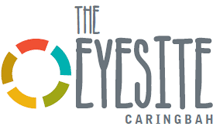Neuro
Optometric
Assessments
Visual problems are often overlooked during initial treatment of a brain injury and a regular eye exam often does not reveal the extent that the visual process has been affected.
Individuals who have experienced some sort of neurological insult or injury, and who are experiencing visual symptoms, can benefit from a vision assessment from a Neuro-Optometric Rehabilitation Optometrist, an eye care professional who specializes in the diagnosis, treatment, and rehabilitation of neurological conditions adversely affecting the visual system.
Neuro-optometric rehabilitation (NOR) is founded on the concept that 70% of afferent sensory input to the brain is vision related
Visual information is processed directly or indirectly in every lobe of the brain (Han, 2007; Kaufmann 1992)
The visual sequela from acquired brain injury (ABI) can negatively impact activities of daily living (ADL’s)
This is especially true after a concussion or mild traumatic brain injury (TBI), where the effects of diffuse axonal injury results in a significant number of visual symptoms (Master et al 2016; Tannen, Darner, Ciuffreda & Rogers 2015
All patients with ABI, visual-vestibular dysfunction & autoimmune conditions should be referred for neuro-optometric evaluation & management
Common Visual Symptoms of Acquired Brain Injury
Eye focusing
Blurred vision difficulty shifting focus from one object to another may be compromised.
Eye teaming
Your eyes may not work together properly as a team even to the point of experiencing double vision.
Eye movements
Difficulty controlling where your eyes move when reading or trying to track moving objects (watching a ball in motion). Loss of place while reading is a common complaint.
Motion sensitivity
The integration of your visual system with your balance system can be impacted, resulting in motion processing difficulties. Symptoms can include discomfort and even dizziness when scrolling on a computer screen or phone, or when in busy environments such as grocery stores, social settings, or sporting events.
Visual Field Loss
Partial or complete vision loss can also occur after a head trauma. The area of the brain that has been affected as well as the extent of the damage will determine your field of view. This may cause such problems as bumping into objects, being struck by approaching objects, or sudden falls.
Eye Pain and Headaches
Whether it is a stabbing pain, dull ache around the eye, or even redness, burning or itching, you may experience eye discomfort following head trauma. Headaches can be long-lasting, even past one year from injury. These symptoms can make it hard for you to carry out daily activities or can cause you to have more difficulty thinking and remembering things.
Sensitivity to Light
Brain injury is often accompanied by increased light sensitivity and general inability to tolerate glare. Photophobia, or sensitivity to light, can be exacerbated by specific light sources, such as bright sunlight and fluorescent lighting. Recent studies have also suggested that LCD screens (such as from computers or smartphone devices) can be particularly bothersome after a concussion.
As part of a multidisciplinary approach, neuro-optometric rehabilitation targets the underlying cause of a person’s symptoms related to their vision problem.
If you have experienced a concussion or traumatic brain injury or are experiencing symptoms such as those listed above, please contact our practice to schedule a comprehensive vision assessment.


